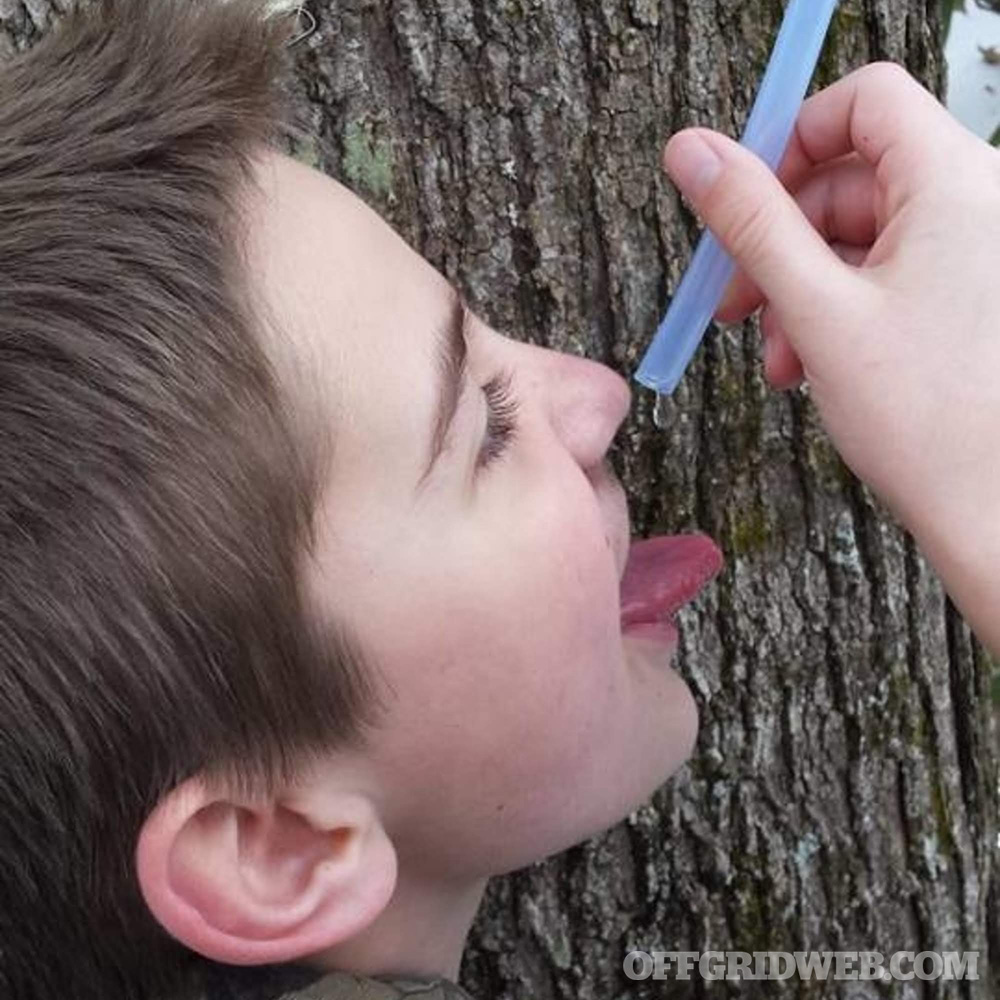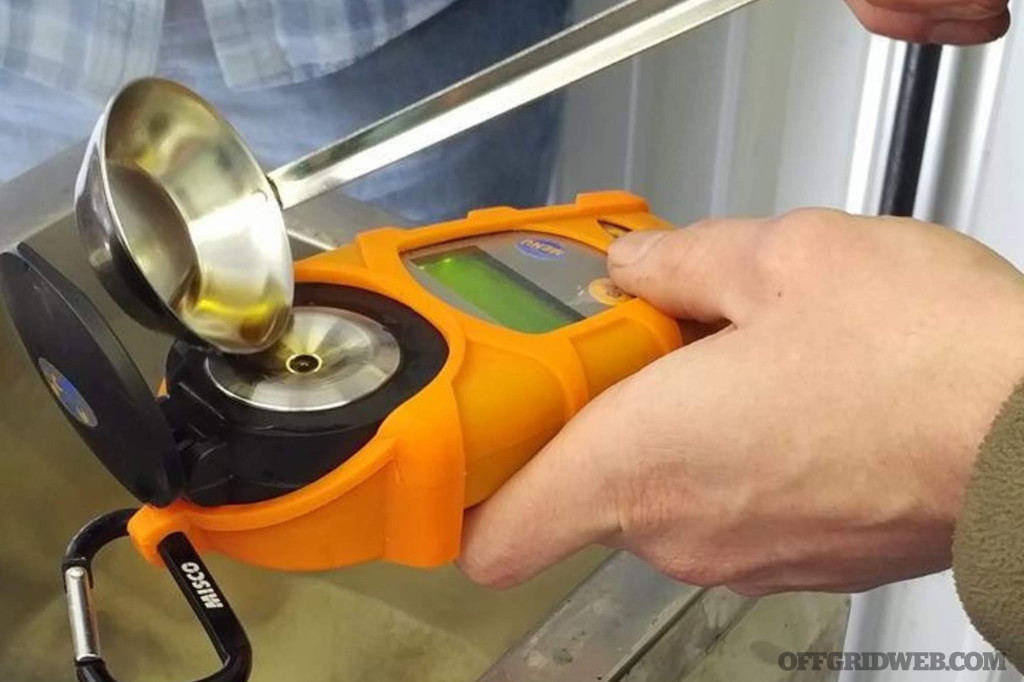RECOIL OFFGRID Preparation How to Make Syrup from Maples & Other Trees
In This Article
Winter downtime is a myth for anyone living away from the comforts of suburbia. Even though gardening and beekeeping are on hold and egg production is slowed, there’s still much to be done during the colder months. Livestock producers are seeing calves and lambs born. There’s firewood to manage. However, unless you’re a quilter, woodworker, knifemaker, or homebrewer, the shift in activities can lead to cabin fever or a reduction in productivity.
Fortunately, there’s a high-value food product that can be produced and stockpiled on the homestead during the short days of winter — maple syrup.
Even if you don’t reside in a well-known syrup-producing region such as New England or Canada, and even if your neighbors assure you that “we don’t have those kinds of trees around here,” syrup could still be an option. And it’s not restricted solely to those who are blessed with dense groves of sugar maples.

The classic tree syrup is maple, of course, and sugar maple is the king sap-producer of the Acer genus, but all maple species will yield maple syrup — red maple, black maple, and silver maple. The lowland growing boxelder, too, is technically a maple and makes a decent syrup. The primary difference among these will be the sugar content, and as the name suggests, sugar maple will have the most. The textbooks say that the sap-to-syrup ratio is 40 to 1 for sugar maple and 60 to 1 for red (although this will fluctuate from tree to tree and throughout the season).

Sap can be consumed straight from the tree, where it averages 1 to 3 percent sugar and looks and tastes like water.
Other trees can produce syrup in the same way as the maples, including black walnut and sycamore, although both the sugar levels and sap yields will be lower. Birch syrup is produced in some areas, but the sap-to-syrup ratio is typically going to be upwards of 100 to 1. Furthermore, as opposed to sucrose in maple sap, the sugar in birch is fructose, meaning it’s more likely to scorch, so cooking it down is a much slower process.
Naturally, there’s been much more research and tradition tied to maple syrup over the years than other types. If you’re venturing into other genera, proceed slowly and cautiously, as you’ll be figuring out a lot on your own.

A refractometer, although not necessary, can be a convenient way to monitor the sugar content of the sap/syrup.
As far as timing goes, that’s another component you’ll need to figure out. Maine sees its peak sap flow in March, for instance, while the flow in Virginia may end in late February. It’s even possible to tap sycamores in the fall in many instances. For maple production, you’ll want nights with temperatures in the 20 degrees F (-6 degrees C) range, followed by days in the mid-40s (4 degrees C).
Tap only healthy-looking trees that are at least ten inches in diameter, trees with no dieback, fire scarring or other visible weaknesses. Drill a 1.5-inch-deep hole into the trunk at a convenient height using a 5/16-inch bit, and lightly tap the spout in just far enough so that it can’t be pulled out by hand easily. In subsequent years, drill the holes at least six inches above or below and six inches to the right or left of the previous year’s taps.
Once a tap is done, the tree quickly begins an attempt to seal off that wound, so it’s important not to tap too early. Six to ten weeks is about how long that tap can be productive. As for long-term sustainability, the same trees are often tapped for generations. Healthy trees will naturally compartmentalize the wounds after about 10 weeks, sealing off any infections that might try to find their way in.
Most backyard syrup producers begin with buckets, and unless you invest in the galvanized ones, this can be the most economical approach. Ten taps can be set up for well under $20. Bakeries and delis will often give away their old plastic buckets, but be sure to avoid any that could taint the flavor of your final product. Icing buckets, for instance, are perfect. Dill pickle buckets — not so much.
One-gallon water containers or plastic ice cream tubs are fine for a few trees, too, but keep in mind that the perfect weather can yield well over a gallon of sap per tap in a single 24-hour period.
Plastic spouts can be purchased for a few cents each, and a few feet of tubing will be needed to connect the spout and the container.
As for the number of taps per tree, a good rule of thumb is that if you can reach all the way around the tree, one tap is enough. If you can’t, install two. If it takes two people to reach around it, that’s good for three taps. Tables can be found online that give diameter-specific tap numbers, if you want to be more scientific about it.
If tapping on a steep slope, tubing will eventually seem like a good move. Up until recent years, the norm has been to use 5/16-inch tubing plugged into larger mainlines, but 3/16-inch tubing has gotten more popular. For a small number of taps, the 3/16 can be zig-zagged downslope from tree to tree without a mainline. Another advantage of the 3/16-inch over the 5/16-inch tubing is that, if you have at least a 30-foot descent from the highest to the lowest points, the smaller diameter creates a vacuum effect and will ultimately yield more volume.
The cost for the 3/16-inch tubing is currently about $50 for an 800-foot roll, and this can potentially be enough to connect 25 or 30 trees, depending on the spacing.
Storing the sap until ready to cook can be a significant challenge, as the sap can sour during warmer days. The weather will often work to your advantage, and if your sap freezes in the containers, count your blessings. Creating a snow bank for storage is a good idea, if you lack enough refrigerator or freezer space to keep it all.
Sap can be kept for a week or longer by pouring it all into a large chest cooler and freezing a gallon or two of sap to float in it, thereby keeping its temperature down.
Be sure to only use food-grade containers for collection and storage, as sap is notorious for hanging onto flavors and smells and imparting those into the syrup.
A low-cost option for larger volume collection is a (new and unused) trash container, but again, make sure it’s food-grade.
Stock tanks, recycled 55-gallon drums from the soft drink industry or stainless steel dairy tanks are other options for storing and collecting sap.
Store-bought syrup pans and evaporators make sense for large-scale production, but the prices in a supplier catalog can be discouraging for a backyard producer. A wide pan that exposes as much surface area as possible speeds up the evaporation process, so something like a five- or six-gallon stockpot isn’t very efficient. A wood fire will usually prove to be the best heat source, especially if you have access to your own firewood, although propane is fine for finishing.
Stainless steel water pans from a restaurant supplier can hold several gallons, and there are numerous ideas online for creating wood-burning evaporators that hold two to four of these.
Sap will be cooked until it reaches 66 percent sugar (a measurement also known as Brix or °Bx). A candy thermometer is the cheapest way to monitor this. Find the exact elevation for the spot where you’ll be cooking. Then, find a table online that gives you the degrees (in Fahrenheit) for the boiling point of water at that elevation. Add 7.5 degrees F to that number, and that’s the target. For instance, at 2000 feet above sea level, water will boil at 208 degrees F. The syrup can be bottled when the sap reaches 215.5 degrees F.
A consistent aggravation for commercial producers is “sugar sand” or niter, a by-product that can cause cloudy syrup or a gritty deposit in the bottom of the container. It’s harmless but ugly. At the very least, run the hot syrup through a couple layers of muslin cloth before bottling, or consider a cone filter from a maple supplier.
Above: Niter or sugar sand (like what’s settled in the bottom of this jar) is harmless but unattractive. Filtration is necessary for a quality product.
As cooking sap requires so many hours, reverse osmosis filtration is something that has advantages for larger producers. Reverse osmosis machines are expensive, but when one considers that they remove up to 75 percent of the water from sap before the boiling even begins, the time-savings can be significant when managing 1000 taps or more.
Once you’ve established the tools and techniques for syrup production, it’s likely that you’ll end up with more than your family (and your friends, relatives, and neighbors) can use. In this case, selling the excess syrup can be a great way to generate income to support other homesteading projects. If you’re planning to sell syrup, you’ll need to contact your local Extension office for information on bottling and labeling requirements for your area. It may be that you can sell through some venues like farmers’ markets or on-the-farm but not others without an inspection of your facility. Value-added products can increase the revenue per gallon of syrup quite a bit. Bourbon-barrel-aged syrup, syrup coated pecans, or maple candy are good examples.
For those who have invested in reverse osmosis equipment, it’s even possible to bottle the permeate and sell it as “purified maple water” (after jumping through the appropriate legal hoops). Many producers sell maple cotton candy, but most don’t use their own syrup for this, instead buying maple sugar to use.
Selling maple or birch sap straight from the tree could be an option for those who don’t want to bother with cooking. Check with any nearby producers about buying sap. Plus, there seems to be a market for unprocessessed sap among consumers as a sort of natural, organic beverage.
The tourism potential of syrup can include pancake breakfasts, tours and festivals, and this can be especially helpful as fundraising for local fire departments, rescue squads, or youth groups.
Syrup production can be a worthwhile investment of winter hours. Whether it’s approached as a business or simply with the goal of a few pints for one’s own use (or for gifts or bartering), it’s a surprisingly easy and affordable skill to learn.
 STAY SAFE: Download a Free copy of the OFFGRID Outbreak Issue
STAY SAFE: Download a Free copy of the OFFGRID Outbreak Issue
No Comments